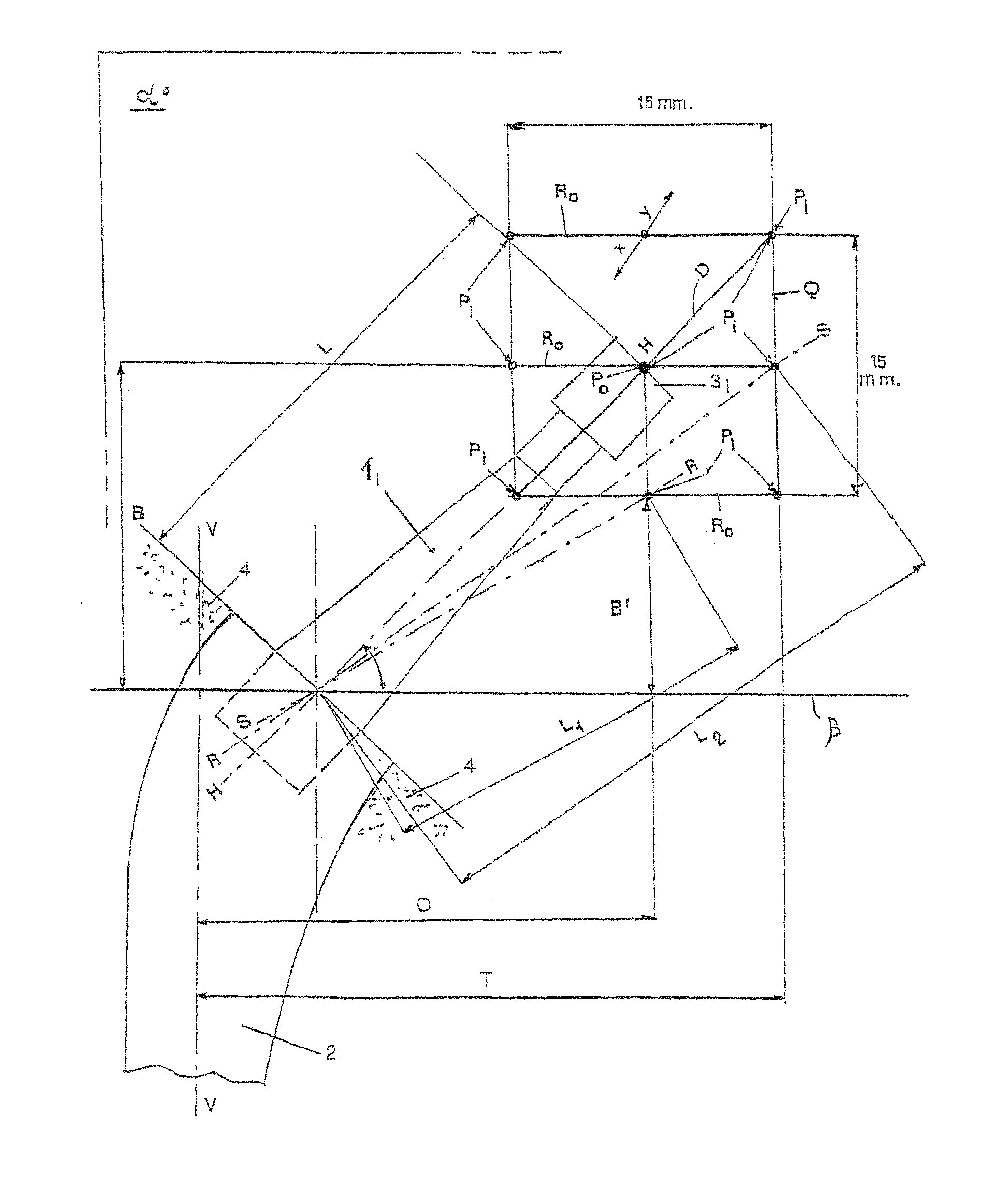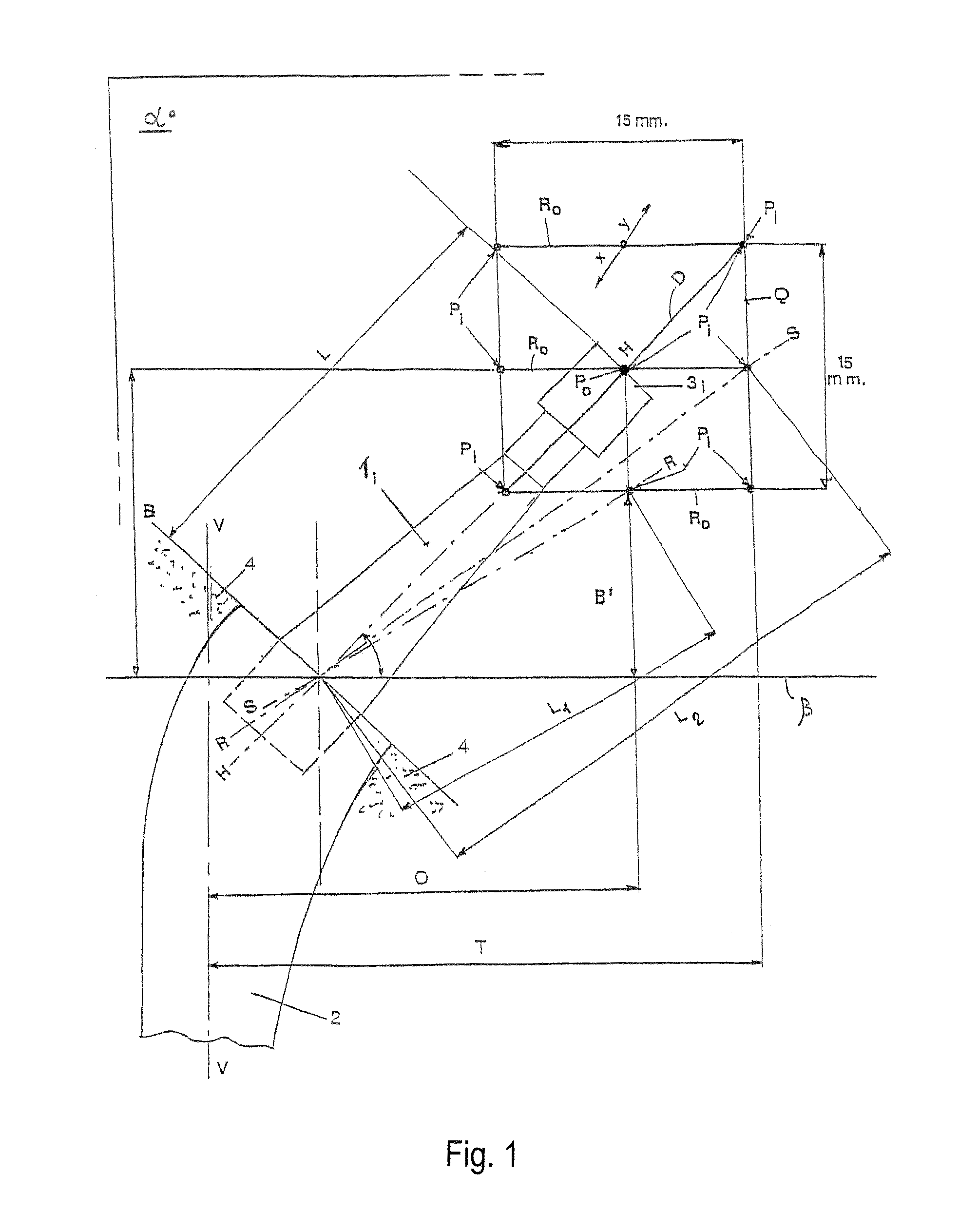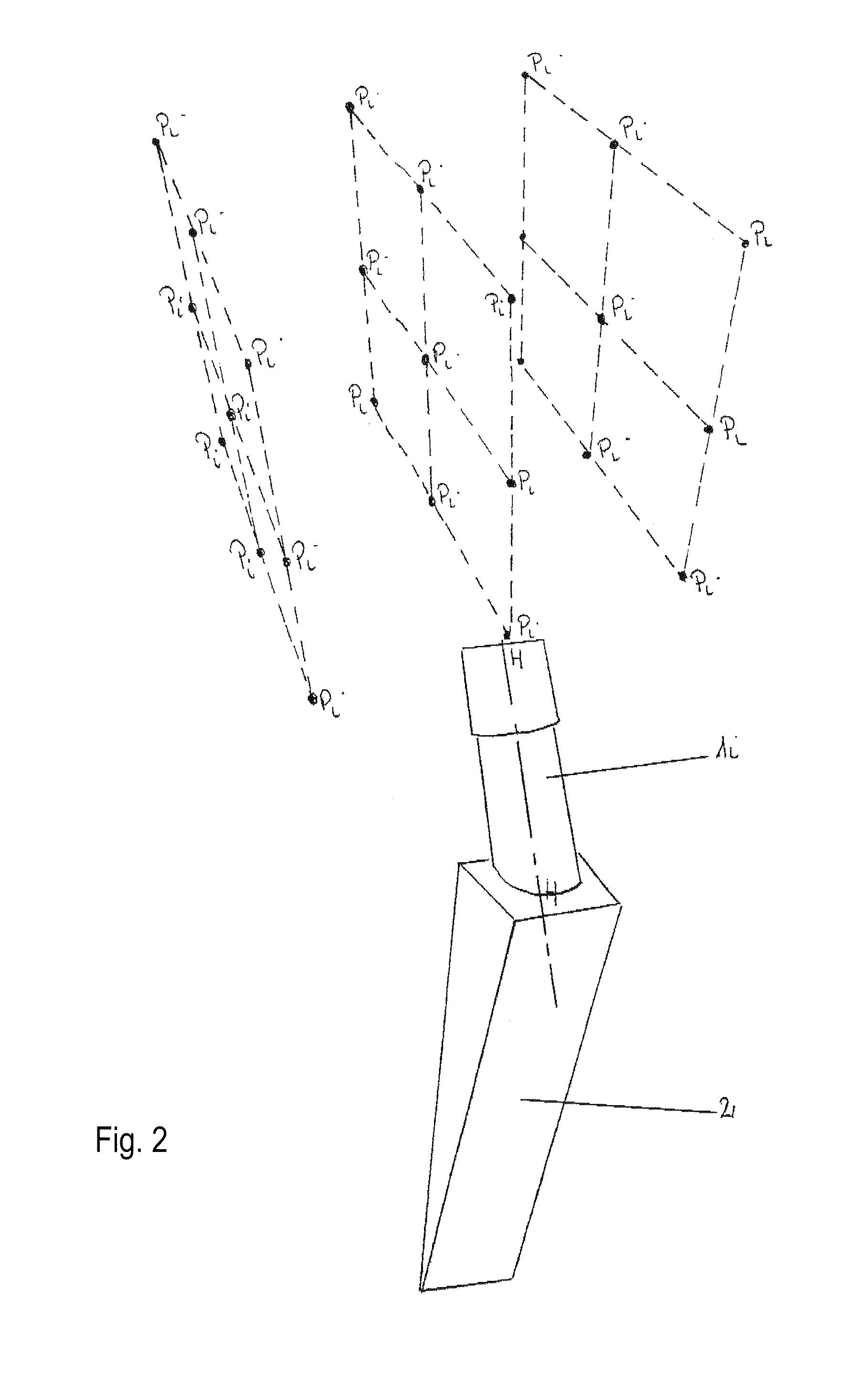Set of mobile necks for inserting into the stem of a hip prosthesis
a hip prosthesis and mobile neck technology, applied in the field of hip prosthesis components, can solve the problems of reducing the height in a way that might not always be acceptable, prohibiting costs, and preventing many people from the chan
- Summary
- Abstract
- Description
- Claims
- Application Information
AI Technical Summary
Benefits of technology
Problems solved by technology
Method used
Image
Examples
Embodiment Construction
[0027]A more detailed description will now be given of an illustrative embodiment of a set according to the invention reference also being made to the accompanying drawing figures.
[0028]FIG. 1 is an enlarged diagram illustrating the various possible geometrical characteristics of each neck forming the set. FIG. 2 is another view showing the neck orientation.
[0029]Referring to FIGS. 1 and 2, this shows that nine mutually equidistant points Pi are arranged in threes in three horizontal parallel rows Ro, which are likewise equidistant from each other.
[0030]Part of the stem 2 is inserted into a femur 4, into which there is inserted by known methods one end of a mobile neck 1i belonging to the set of the invention, the free end 3i of which is shaped to allow it to be housed in a spherical head (not shown).
[0031]The free end 3i terminates along the axis H-H of the mobile neck at one of the points Pi, marked Po in the drawing figures, and therefore has a length L and an inclination of 45° ...
PUM
 Login to View More
Login to View More Abstract
Description
Claims
Application Information
 Login to View More
Login to View More - R&D
- Intellectual Property
- Life Sciences
- Materials
- Tech Scout
- Unparalleled Data Quality
- Higher Quality Content
- 60% Fewer Hallucinations
Browse by: Latest US Patents, China's latest patents, Technical Efficacy Thesaurus, Application Domain, Technology Topic, Popular Technical Reports.
© 2025 PatSnap. All rights reserved.Legal|Privacy policy|Modern Slavery Act Transparency Statement|Sitemap|About US| Contact US: help@patsnap.com



